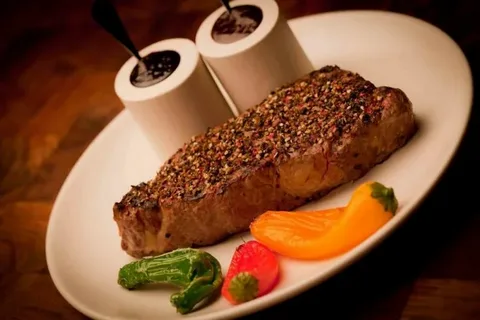How Restaurant Menus Reflect Culture and Tradition Around the World

Restaurant menus are far more than just lists of dishes and prices; they are cultural artifacts that tell the story of a nation’s traditions, flavors, and history. When travelers step into a restaurant in a new country, the first thing they often encounter is the menu. This document instantly communicates what the community values, how ingredients are sourced, and which cooking techniques are central to its cuisine. In many ways, menus serve as silent storytellers, giving guests an immediate taste of the cultural identity that lies behind every meal.
Beyond serving food choices, menus can also act as educational tools that reveal a society’s culinary evolution. They highlight regional diversity, display seasonal preferences, and showcase the balance between traditional heritage and modern innovation. Today, with globalization bringing different cuisines together, menus are evolving to reflect fusion, creativity, and inclusivity while still honoring deep-rooted traditions. For diners who seek to understand culture through food, exploring menus around the world is one of the most engaging journeys.
Menus as Cultural Narratives
A restaurant menu functions much like a cultural diary, carefully recording how communities preserve and celebrate their heritage. For instance, Japanese menus often emphasize harmony and seasonality, presenting dishes that respect both nature and tradition. In contrast, Italian menus place emphasis on family and communal dining, highlighting pastas, breads, and wines that have been passed down through generations. These menus serve as reminders that food is never isolated from identity; rather, it mirrors the values and beliefs of a people.
The storytelling role of menus becomes even more evident when restaurants include historical notes or local legends alongside their dishes. Some establishments go beyond mere descriptions, offering context that connects meals to cultural practices or historical events. As platforms such as The Menu Mountie make global restaurant information accessible, diners gain an even deeper appreciation of how menus are gateways into culture. A seemingly simple page of dishes thus becomes a bridge between tradition and modern-day dining experiences.
Regional Identity and Local Ingredients
Menus frequently showcase a region’s agricultural bounty and climate, highlighting ingredients that are locally grown and deeply tied to the land. For example, Mediterranean menus are filled with olives, citrus, and seafood, reflecting the coastal lifestyle and reliance on fresh produce. Similarly, Indian menus highlight a wide variety of spices, demonstrating how geography and trade routes have shaped the subcontinent’s culinary identity. Local produce not only nourishes the community but also builds a strong connection between the land and the plate.
In some countries, government policies and sustainability initiatives further influence what appears on menus. Scandinavian nations, for instance, have made farm-to-table approaches central to their dining culture, and this is clearly visible in their restaurant offerings. By focusing on regional identity and seasonal crops, menus become vehicles for cultural preservation while supporting sustainability and ethical sourcing. In this way, the food choices listed are never random—they are deeply tied to history, geography, and a community’s way of life.
Festivals, Traditions, and Rituals on Menus
Cultural festivals and traditions are often reflected directly on restaurant menus, as special dishes make their way into seasonal offerings. During Chinese New Year, for example, menus across China and beyond feature dumplings, fish, and symbolic dishes meant to bring prosperity and good fortune. In Mexico, Día de los Muertos inspires menus filled with pan de muerto and sugar skull-inspired desserts, capturing the deep relationship between food and remembrance. Such festive items allow diners to participate in centuries-old traditions even while eating at a modern establishment.
These seasonal changes also serve as reminders that food is not just for nourishment—it is an essential part of ritual and identity. By offering traditional festival foods, restaurants preserve the spiritual and emotional connections tied to heritage. Whether it is Ramadan-inspired iftar menus in the Middle East or Thanksgiving menus in North America, these seasonal inclusions prove how integral food is in carrying forward cultural practices. Menus, therefore, become living calendars that mark time through taste and tradition.
Language and Symbolism in Menus
The language used in menus is itself a cultural indicator, often revealing how communities perceive their own food. In France, menus typically use elegant, descriptive language that emphasizes culinary artistry, while in the United States, menus may prioritize portion sizes and bold flavors. In Japan, the practice of using kanji, hiragana, and sometimes English translations shows both respect for tradition and awareness of global visitors. This use of language signals how a culture wants its cuisine to be perceived both locally and internationally.
Beyond text, menus also employ visual symbolism. Colors, icons, and imagery often reflect cultural aesthetics. For example, Indian restaurant menus frequently use bright colors symbolizing prosperity, while minimalist Nordic menus reflect simplicity and purity. Through both words and visuals, menus reveal how deeply food is embedded in cultural symbolism. These design choices allow menus to communicate far more than taste—they embody a nation’s identity in subtle yet powerful ways.
Modernization and Fusion on Menus
With globalization and cultural exchange, menus are no longer limited to traditional offerings. Restaurants around the world increasingly experiment with fusion, blending flavors from different cultures into creative dishes. A sushi roll with Mexican spices or an Italian pasta dish with Asian ingredients is evidence of how culinary traditions are constantly evolving. Menus in cosmopolitan cities like New York, London, or Dubai often act as cultural crossroads, where diners can experience multiple traditions in one sitting.
This modernization, however, does not mean abandoning cultural identity. Many chefs skillfully balance innovation with tradition, ensuring that menus still pay homage to heritage while adapting to contemporary tastes. By doing so, they create opportunities for diners to experience familiar comfort foods alongside adventurous new flavors. This blending reflects a cultural reality in which traditions are cherished but also adapted to meet the needs of a globalized world.
Menus as Tools of Cultural Education
Restaurant menus also serve as educational resources for those who wish to understand the stories behind their food. Some establishments go as far as including notes about origin, preparation methods, or historical background. A guest reading such a menu is not only choosing what to eat but also learning about centuries-old techniques and cultural practices. This educational element strengthens the connection between diners and the traditions being celebrated.
In the digital era, online menus and restaurant platforms further extend this educational role. Diners can explore cuisines from across the world before even stepping foot in a restaurant. This accessibility enables greater cross-cultural understanding and appreciation. Menus thus become informal classrooms where every dish introduces a lesson in history, geography, and identity.
The Emotional and Social Connection of Menus
Menus also play a role in social bonding and emotional connection. Families often choose restaurants not only for the taste but also because the menu reflects shared traditions or comfort foods. A grandmother’s recipe listed on a family-run restaurant’s menu can evoke nostalgia and a sense of belonging. This emotional layer reinforces the idea that menus are more than practical guides; they are symbols of continuity and togetherness.
In multicultural societies, menus serve as a bridge for communities to connect through food. A diverse range of dishes on a single menu allows different cultural groups to celebrate their heritage while sharing it with others. These shared dining experiences foster unity and appreciation among communities, proving that menus have the power to build cultural connections beyond individual tables.
Conclusion: Menus as Cultural Storytellers
In every corner of the world, restaurant menus hold a unique power to tell stories that go beyond food. They are reflections of geography, history, spirituality, and cultural values that have been passed down through generations. From showcasing local ingredients to celebrating festivals and embracing modern fusion, menus continue to evolve while preserving identity. By studying what is listed on these pages, one can discover the soul of a community.
As diners, paying closer attention to menus allows us to engage with culture in a more meaningful way. Whether we are reading a simple handwritten menu at a family restaurant or scrolling through digital listings on global platforms, each dish connects us to a deeper heritage. Menus are, and always will be, powerful cultural storytellers—bridging tradition, innovation, and the universal love for food.




